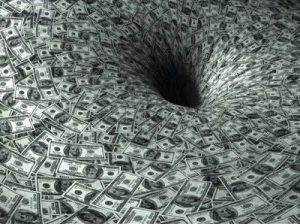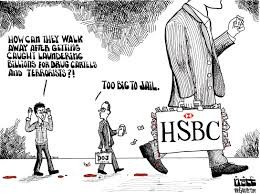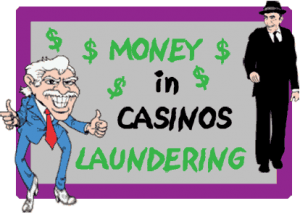How Money Laundering Works
 Money laundering is the process of transforming the earnings made out of crime into seemingly legitimate money or other assets. However, in a number of legal and regulatory systems, the term money laundering has become synonymous with other forms of financial crime, and sometimes used more generally to include misuse of the financial system involving things such as securities, digital currencies, credit cards, and traditional currency, including terrorism financing and fudging of international sanctions. Most anti-money laundering laws dig into finding source of funds and destination from where the money in pumped in the system. These days we see that one of the aims of money laundering is to finance terrorists’ activities. In the common sense, money laundering means converting money acquired through illegal means where taxes are not paid, profits from selling illegal goods/services into legally-acquired income.
Money laundering is the process of transforming the earnings made out of crime into seemingly legitimate money or other assets. However, in a number of legal and regulatory systems, the term money laundering has become synonymous with other forms of financial crime, and sometimes used more generally to include misuse of the financial system involving things such as securities, digital currencies, credit cards, and traditional currency, including terrorism financing and fudging of international sanctions. Most anti-money laundering laws dig into finding source of funds and destination from where the money in pumped in the system. These days we see that one of the aims of money laundering is to finance terrorists’ activities. In the common sense, money laundering means converting money acquired through illegal means where taxes are not paid, profits from selling illegal goods/services into legally-acquired income.
Anywhere between $500 billion and $1 trillion money is laundered worldwide every year. On the socio-cultural end of the successful laundering money means that criminal activity actually does pay off. This success encourages criminals to continue their illegitimate schemes because they get to spend the profit with no consequences. This means more fraud, more corporate misuse (which means more workers losing their pensions when the corporation collapses), more drugs on the streets, more drug-related crime, law-enforcement resources stretched beyond their means and a general loss of morale on the part of legitimate business people who don’t break the law and don’t make nearly the profits that the criminals do. The economic effects are on a broader scale.
Developing countries often bear the burden of modern money laundering because those governments are still in the process of establishing regulations for their newly privatized financial sectors. This makes them a prime target. In the 1990s, numerous banks in the developing Baltic States ended up with huge, widely rumoured deposits of dirty money. Bank patrons proceeded to withdraw their own clean money for fear of losing it if the banks came under investigation and lost their insurance. The banks collapsed as a result. Other major issues facing the world’s economies include errors in economic policy resulting from artificially inflated financial sectors. Massive influxes of mucky cash into particular areas of the economy that are desirable to money launderers create false demand, and officials act on this new demand by adjusting economic policy. When the laundering process reaches a certain point or if law-enforcement officials start to show interest, all of that money will suddenly disappears without any predictable economic cause.
Some problems on a more local scale relate to taxation and small-business competition. Laundered money is usually untaxed, meaning the rest of us ultimately have to make up the loss in tax revenue. Also, legitimate small businesses can’t compete with money-laundering front businesses that can afford to sell a product for cheaper because their primary purpose is to clean money, not turn a profit. They have so much cash coming in that they might even sell a product or service below cost.
 From where does the dirty money come? Money is obtained from certain crimes, such as extortion, insider trading, drug trafficking and illegal gambling. It needs to be cleaned to appear to have been derived from legal activities so that banks and other financial institutions will deal with it without suspicion. Money can be laundered by many methods, which vary in complexity and deception. Different countries may or may not treat payments in breach of international sanctions as money laundering. Some jurisdictions differentiate these for definition purposes, and others do not. Some jurisdictions define money laundering as disguising sources of money, either intentionally or by merely using financial systems or services that do not identify or track sources or destinations.
From where does the dirty money come? Money is obtained from certain crimes, such as extortion, insider trading, drug trafficking and illegal gambling. It needs to be cleaned to appear to have been derived from legal activities so that banks and other financial institutions will deal with it without suspicion. Money can be laundered by many methods, which vary in complexity and deception. Different countries may or may not treat payments in breach of international sanctions as money laundering. Some jurisdictions differentiate these for definition purposes, and others do not. Some jurisdictions define money laundering as disguising sources of money, either intentionally or by merely using financial systems or services that do not identify or track sources or destinations.
Other jurisdictions define money laundering to include money from activity that would have been a crime in that jurisdiction, even if it were legal where the actual conduct occurred. There are smart financial brains involved in laundering money in the world.
Stages of money laundering:
Placement: This involves physically placing illegal money into the financial system or the retail economy. The “dirty” money is most susceptible to detection and seizure during placement.
Layering: means separating the illegally obtained money from its source through a series of financial transactions that makes it difficult to trace the origin. During the layering phase of money laundering, criminals often take advantage of legitimate financial mechanisms in attempts to hide the source of their funds. Few of the many mechanisms that are used are currency exchanges, wire transmitting services, prepaid cards that offer global access to cash via automated teller machines and goods at point of sale, casino services and domestic shell corporations lacking real assets and business activity that are set up to hold and move illicit funds.
Integration: The final stage is converting the illicit funds into a seemingly legitimate form. Integration may include the purchase of businesses, automobiles, real estate and other assets.
 A common way of legalizing illicit funds is by setting up various businesses that exist for the sole purpose of blending dirty money with legitimate incomes. While the companies set up are legal in nature and can operate like ordinary businesses, they can overstate their income, which comes from over-invoicing to allow inflow of ‘dirty’ money. Businesses that are on cash basis like nightclubs make the inflow even more difficult to trace. Shell companies (a company without active business operation of significant assets) that are set up without any significant assets or operations can also be used for money laundering. These companies simply create fake transactions similar to normal businesses to allow inflow of cash. The funds can be cycled in a few more companies before reaching your pocket as legitimate cash. Other common sources are chain of convenience stores and ironically even banks, and yes antique stores and art galleries, spa, salons, fitness clubs etc. These are all business that regularly transact business in cash and that are highly prized by people wishing to conceal the origin of their funds.
A common way of legalizing illicit funds is by setting up various businesses that exist for the sole purpose of blending dirty money with legitimate incomes. While the companies set up are legal in nature and can operate like ordinary businesses, they can overstate their income, which comes from over-invoicing to allow inflow of ‘dirty’ money. Businesses that are on cash basis like nightclubs make the inflow even more difficult to trace. Shell companies (a company without active business operation of significant assets) that are set up without any significant assets or operations can also be used for money laundering. These companies simply create fake transactions similar to normal businesses to allow inflow of cash. The funds can be cycled in a few more companies before reaching your pocket as legitimate cash. Other common sources are chain of convenience stores and ironically even banks, and yes antique stores and art galleries, spa, salons, fitness clubs etc. These are all business that regularly transact business in cash and that are highly prized by people wishing to conceal the origin of their funds.
If the type of money is in large denomination, then discounting trade is the best business. Example would be to buy goods and sell them at 5%-10% lower.
For electronic money or money that is black or grey in a system, there are literally 100s of ways to whiten the money. These days, off-shore channels are used to whiten the money by investing in investment vehicles in other countries, specifically to whiten money. This is called an amnesty scheme (to bring more people into the tax bracket). A lot many people, who are aware of such avenues, regularly take advantage of it.
Over the past several years the banking industry, financial institutions, and the financial services industry have made significant improvements in detecting money laundering and preventing it. However, they continue to be susceptible to misuse by criminal elements for laundering illegally obtained profits and funds intended to finance terrorist activities. Money-laundering methods have become more creative; the criminals are intelligent people and some are highly qualified, their strategies for money trafficking cannot be challenged. In the early nineties money laundering became prominent business due to the expansion of markets, cross border business alliances, more products and services, more difficult financial relationships, advances in technology, and the increased pace of money flows worldwide. The more technology advances, the more people find loopholes in the system. The entire world requires to come together to prevent money laundering. Is the world ready for transparency and precision? This is the most important question which needs to be answered.













































